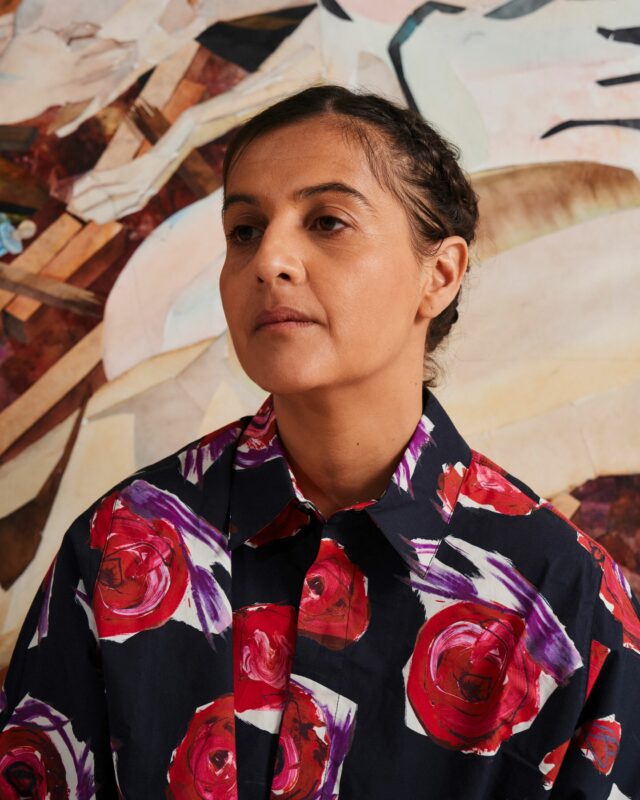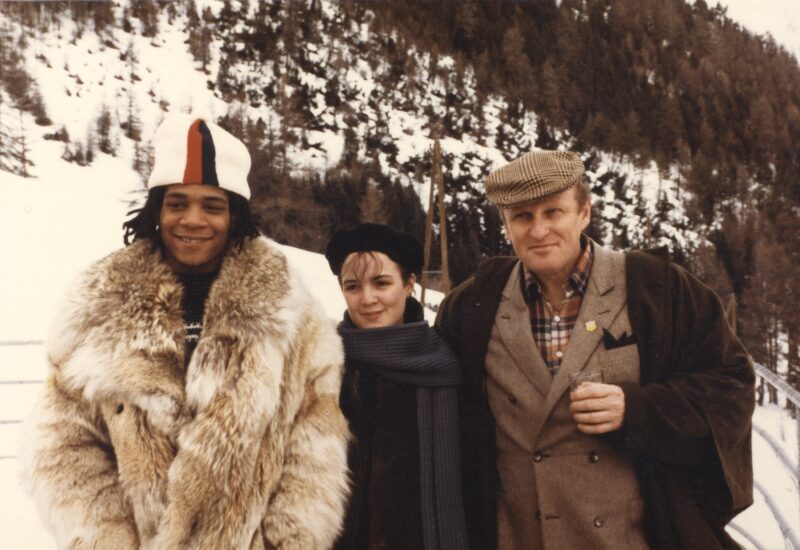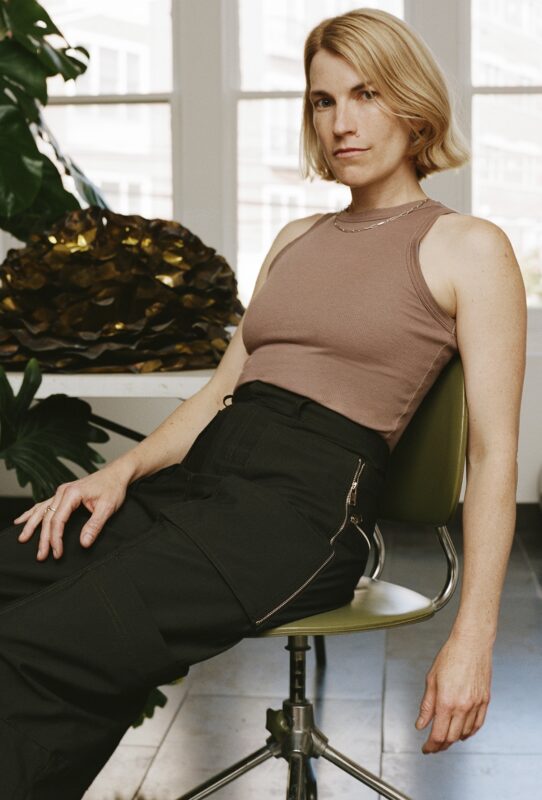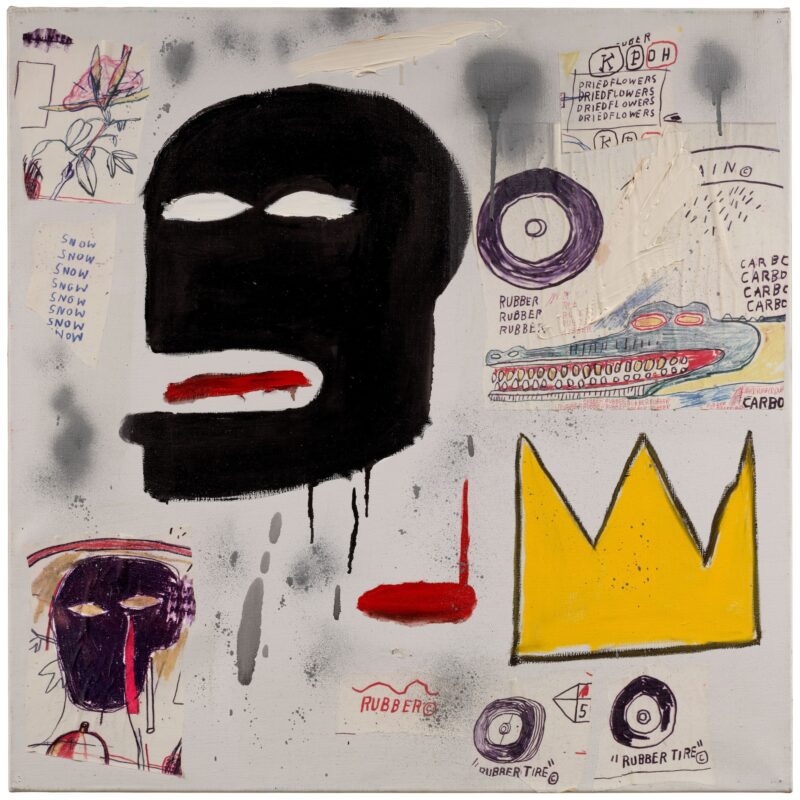Hauser & Wirth announced today that the gallery now represents artist Allison Katz, in collaboration with Gió Marconi, Milan, Antenna Space, Shanghai and dépendance, Brussels.

Allison Katz (b. 1980, Montreal, Canada) has over the last decade emerged as a pioneering voice in contemporary painting, achieving critical acclaim for her genre-defying works which embrace the mutability of images and explore the tensions between what is conveyed and what is perceived. Her practice is rooted in a personal, biographical approach to found imagery and art historical references, combined with irreverent wit, wordplay and humor. From cocks (the bird) and cabbages, to self-portraits and bodies in pieces, Katz’s vivid and idiosyncratic emblems call into question painterly subjectivity and selfhood, as well as the slippery nature of meaning. Her precisely made works shift in style, technique and materiality, often rejecting formal categorization to develop a practice that examines the conventions of the medium, the myths surrounding the role of the artist and that of the exhibition.
Architectural interventions are an integral part of Katz’s practice; her highly considered spatial environments combine paintings, posters and ceramics to produce unique encounters and perspectives. She creates a flow of subtle choreography in alignment with the imagery depicted. By engaging with site-specific conditions, Katz compels the viewer to create connections between her disparate works, giving way to poetic order amidst a proliferation of visual references. Recent works and exhibition titles have alluded to such networks of connection and communication more literally, whether in reference to bodily arteries and the circulation of blood, the canals and systems of transportation in Venice, or the transmutation of an object as it moves from sculpture to photography to painting. Her canvases are, as Katz explains, ‘active locations’ with ‘possible entrances and exits,’ calling attention to the multiple layers of consciousness that reside in a painting’s surface and subject.
Katz’s first exhibition with Hauser & Wirth, featuring new work by the artist, will take place in autumn 2023 in Los Angeles. Early next year, Katz will participate in an artist’s residency at Hauser & Wirth Somerset.
Katz received widespread critical recognition for her first traveling UK solo exhibition ‘Artery’ at Nottingham Contemporary in 2021 and Camden Art Centre in 2022. The accompanying exhibition catalogue for ‘Artery’ will be released in early 2023. Her work is included in the 59th International Art Exhibition of La Biennale di Venezia in 2022, ‘The Milk of Dreams’, curated by Cecilia Alemani. Katz is currently participating in Pompeii Commitments, a research project and artistic residency at the archaeological site in Italy. Additional significant institutional solo exhibitions of her work have been organized by the MIT List Center for the Arts, Cambridge, MA; Oakville Galleries, Oakville, Canada; and Kunstverein Freiburg, Freiburg, Germany.
We are honored to welcome Allison Katz to Hauser & Wirth. She is among a compelling new generation of artists bringing forward fresh energy in the medium of painting. Allison is an assured innovator whose work derives power from its unique combination of intellectual rigour with a signature element of playfulness. She draws on a deep knowledge of art history and her own personal visual lexicon to explore an astounding breadth of ideas, often creating enigmas that stay with us and make us think. We are excited to work closely with Allison and share her vision widely with international audiences in the months and years ahead.
Manuela Wirth, President, Hauser & Wirth
About the artist
Allison Katz was born in Montreal, Canada in 1980 and currently lives and works in London, England. She studied fine arts at Concordia University in Montreal and received her MFA from Columbia University in New York in 2008.
For over a decade, Katz has investigated the ways in which aesthetic practices link and absorb autobiography, commodity culture, information systems and art history. Her diverse imagery, including cocks, cabbages, mouths, fairies, elevators, noses, waterways, and variations on her own name, appear as recurring symbols and icons which build an unending constellation of ideas and references. Images transmute across the media of painting, posters, ceramics and installations. It is through this act of returning to, copying, transforming and reshaping motifs that the artist creates a lineage and continuity from one work to another, informing and connecting the totality with each new appearance. ‘I paint like I write, that is, I build around quotes, which is a conversation, in effect,’ says Katz. Her subjects are united by a curiosity for how an image passes through embodied experience, while its elasticity of meaning is shaped by impersonal, cultural conditions through time. In this way her work addresses the ambiguity of subjectivity and its presentation.
Katz’s work is an examination of painting’s plane as a flat space where depth can appear, in both a literal and metaphorical way. Beyond the picture plane, her practice has a complex arrangement with the tactile world, engaging with the idea of the viewer as both subject and participant. Katz’s use of texture complicates the painting’s window-like view into another world, grounding the physicality of images in our own sense of touch by mixing sand or rice into the pigment.
Further breaking the autonomy of the illustrative tableau, her staging of exhibitions is inextricably linked to the paintings but also separate to them, and often an artwork in and of itself. The walls that she designs are built around the idea of a viewer’s encounter. This may involve the creation of contrasting perspectives, rooms within rooms or one-to-one painted copies of pre-existing architectural features, such as an elevator. Her relationship to site specificity is fluid, and motivated by constraints and a willingness to undermine the premise itself: paintings made to measure for one location find new meaning through a completely alternative set-up elsewhere. The autonomy of painting as a discrete object is both complicated and energized by the contingency of its reception and by the exhibition as form.







